In Figure, find the total magnification after two successive reflections first ono M1 and then on M2.
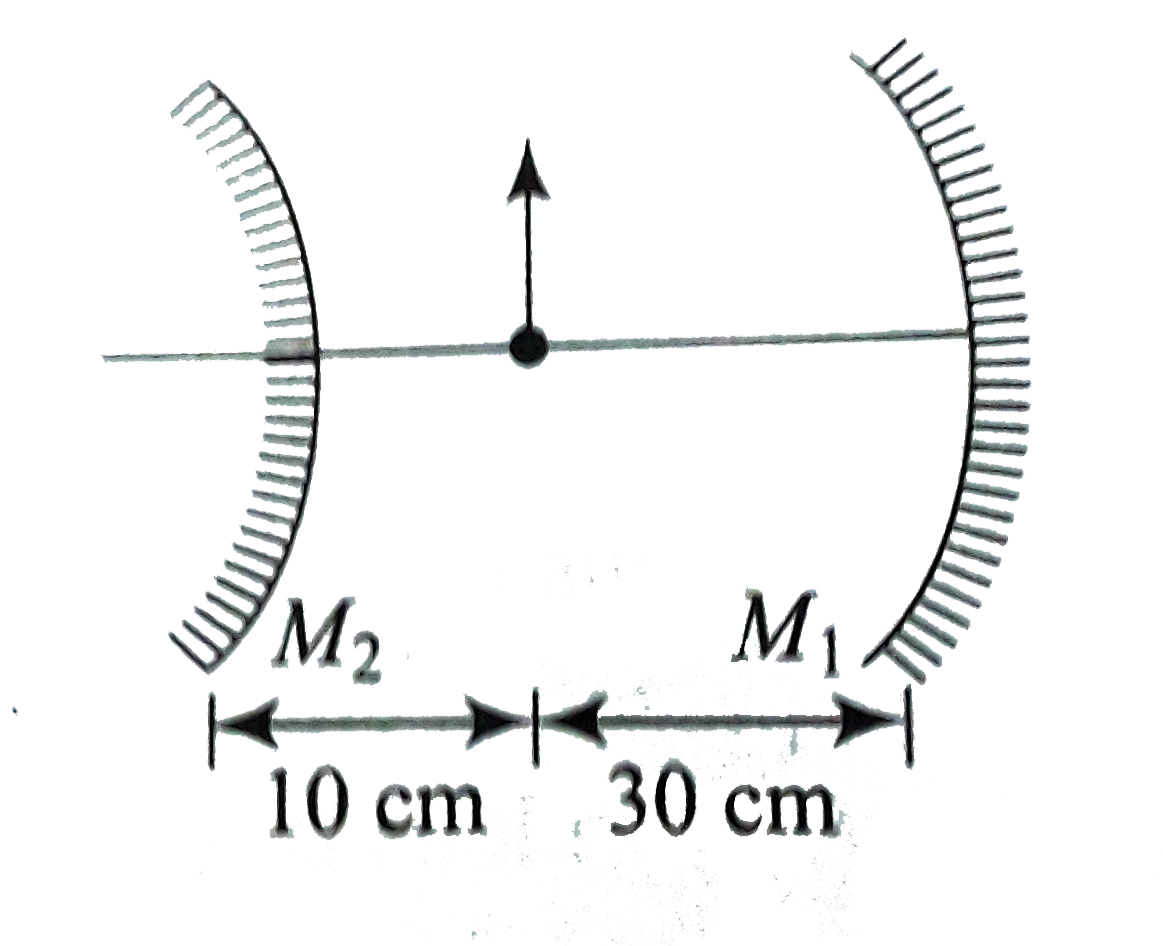
+6
−6
+3
−3
The correct Answer is:B
Step by step video & image solution for In Figure, find the total magnification after two successive reflections first ono M_(1) and then on M_(2). by Physics experts to help you in doubts & scoring excellent marks in Class 11 exams.
Updated on:21/07/2023Topper's Solved these Questions
- RAY OPTICSBOOK - DC PANDEY ENGLISHCHAPTER - RAY OPTICSEXERCISE - B. More than one option is correct
20 Videos
- RAY OPTICSBOOK - DC PANDEY ENGLISHCHAPTER - RAY OPTICSEXERCISE - C. comprehension type question
14 Videos
- RAY OPTICSBOOK - DC PANDEY ENGLISHCHAPTER - RAY OPTICSEXERCISE - Integer type q.
14 Videos
- PROPERTIES OF MATTERBOOK - DC PANDEY ENGLISHCHAPTER - PROPERTIES OF MATTEREXERCISE - Integer
8 Videos
- ROTATIONBOOK - DC PANDEY ENGLISHCHAPTER - ROTATIONEXERCISE - (C) Chapter Exercises
39 Videos
Similar Questions
In the shown figure M1 and M2 are two concave mirrors of the same focal length 10cm . AB and CD are their pricipal axes respectively. A point object O is kept on the line AB at a distance 15cm from M1 . The distance between the mirror is 20cm . Considering two successive reflections first on M1 and then on M2 . The distance of final image from the line AB is:
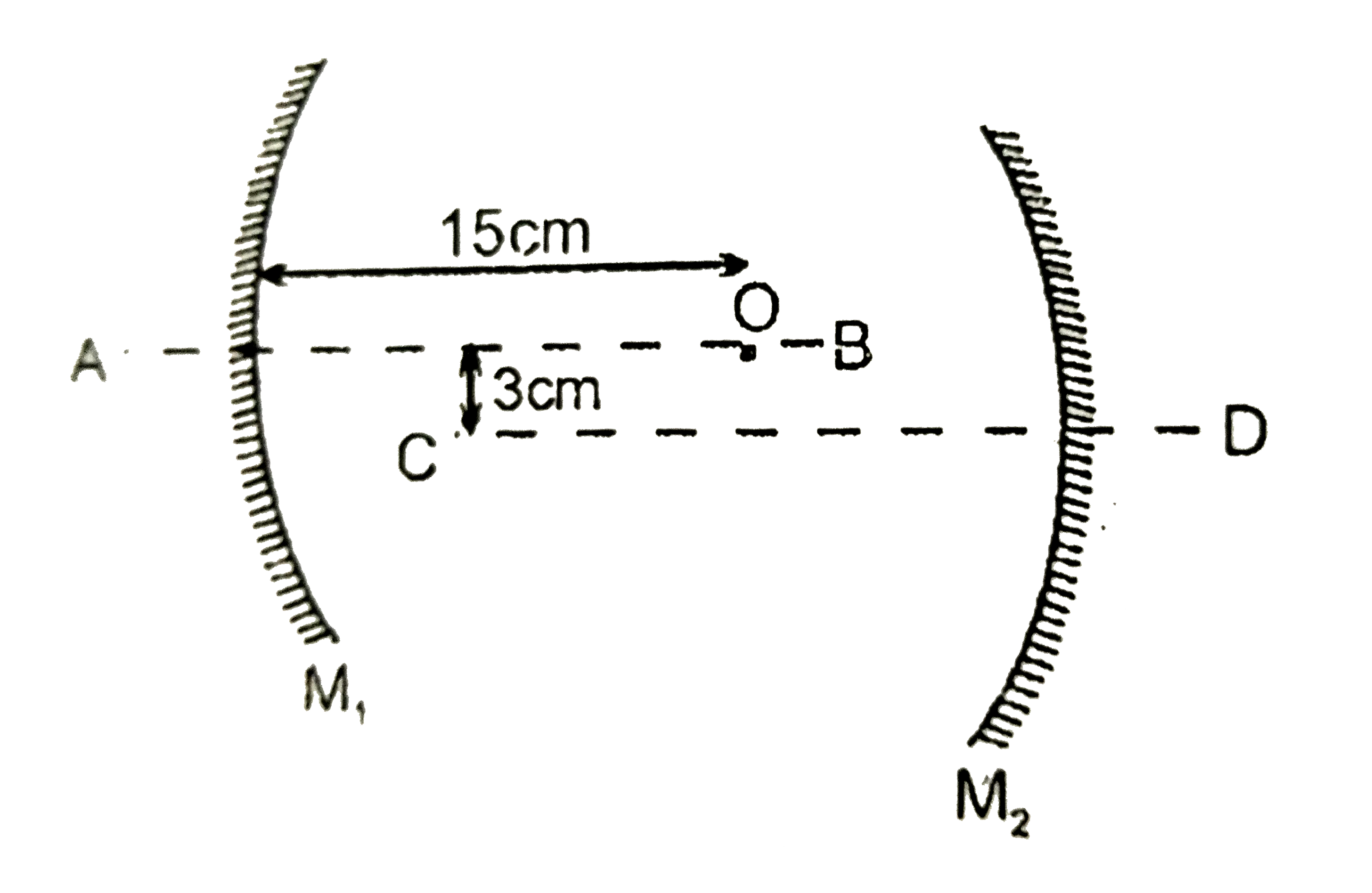
View SolutionIn the figure shown M1 and M2 are two spherical mirrors of focal length 20cm each. AB and CD are their principal axes respectively which are separated by 1cm.PQ is an object of height 2cm and kept at distance 20cm from M1. The separation between the mirrors is 50cm Consider two successive reflections first on M1 then on M2. Find the size of the 2nd image. Also find distances of and points P'' and Q'' of that image from the line AB.
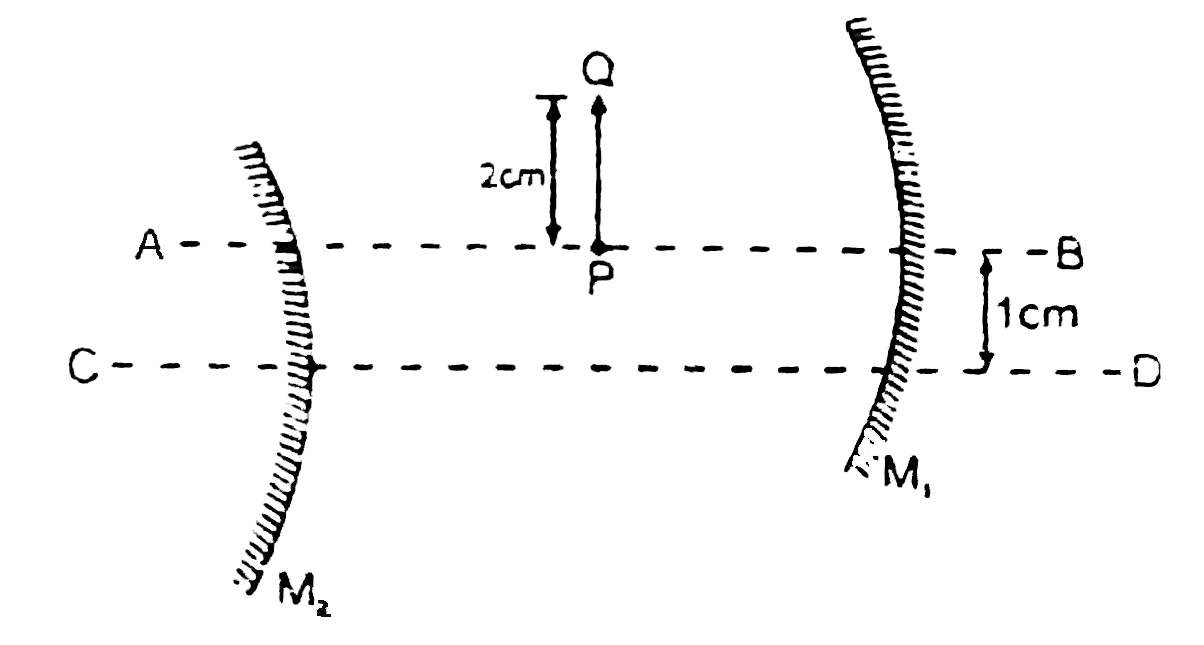 .
.
View SolutionFind the position of the final image after three successive reflections taking the first reflection on m1 .

View SolutionIn the figure shown If the objectO moves towards the palne mirror ,then the image I(which is formed after successive reflections from M1,M2respectively will move:
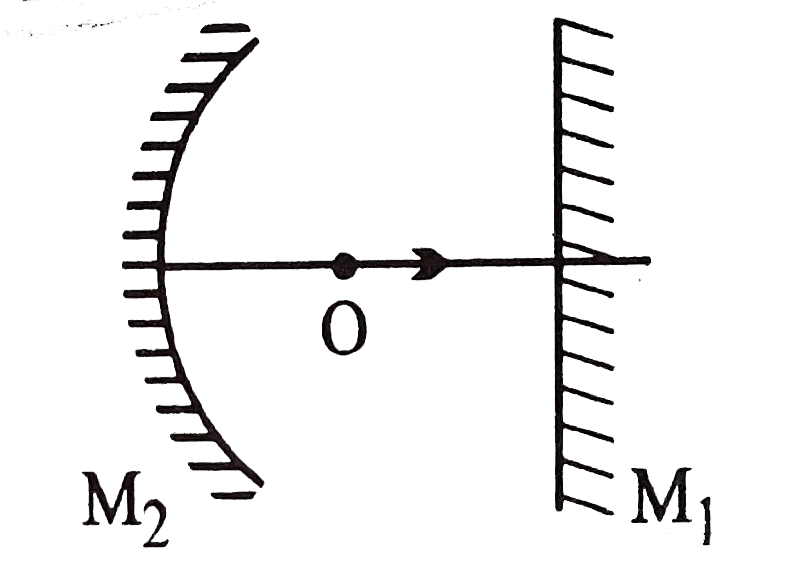
View SolutionIn question 118, if m1 and m2 are the magnifications for two positions of the lens, then
View SolutionIn the figure shown a thin parallel beam of light is incident on a plane mirror m1 at small angle 'θ' . m2 is a concave mirror of focal length 'f' . After three successive reflefctions of this beam the x and y coordinates of the image is
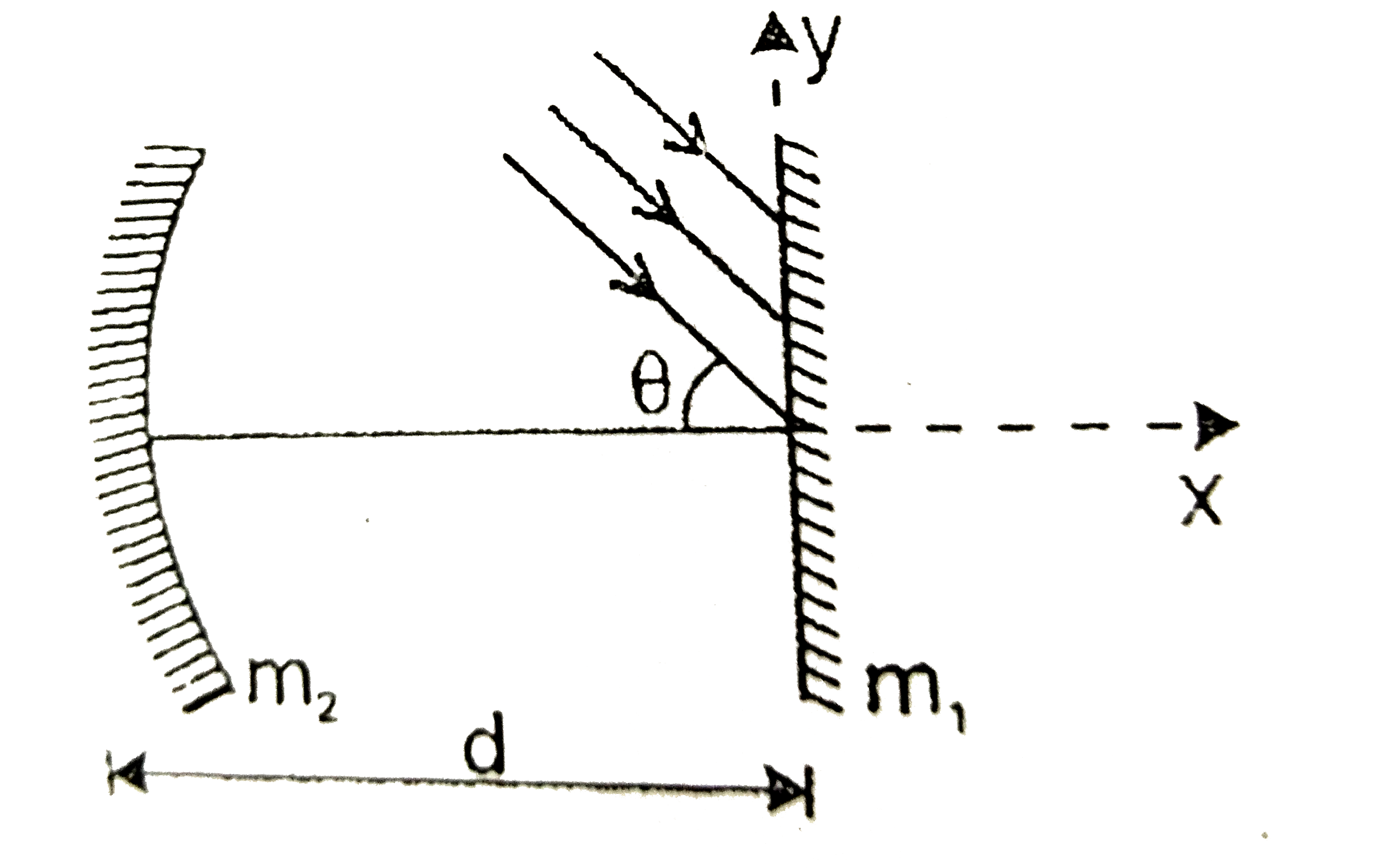
View SolutionThe lateral magnification of the lens with an object located at two different position u1 and u2 are m1 and m2 , respectively. Then the focal length of the lens is
View SolutionThe phase between the two successive M phase is called as
View Solution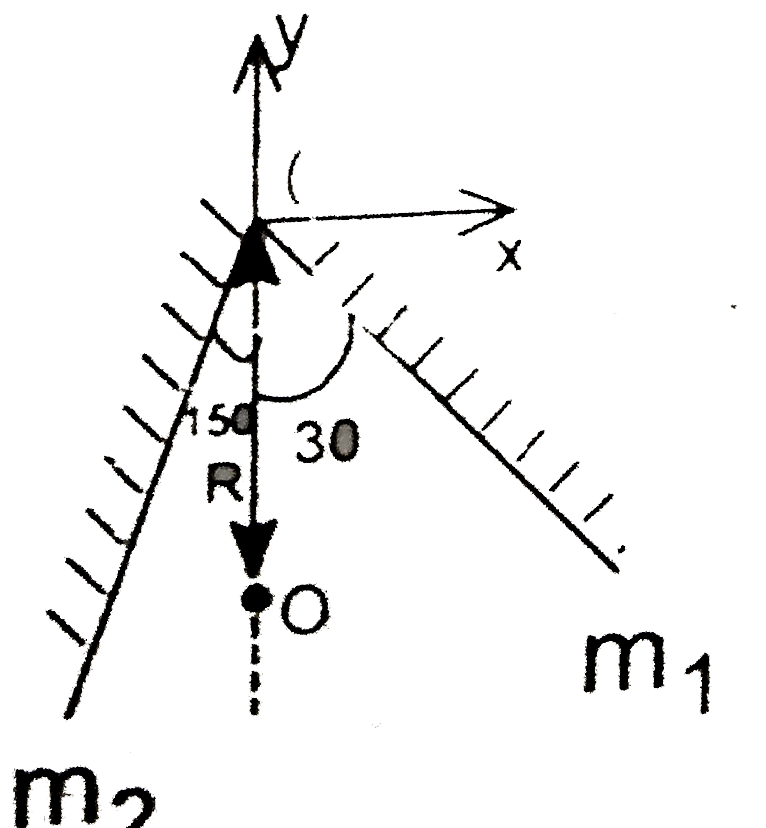
Two plane mirrors intersect at origin. An object 'O' is kept at a distance R on negative y-axis as shown in the figure. The co-ordinates of images formed after three reflections will be (first reflection is is considered at m1)
View SolutionA convex lens is placed between an object and a screen which are at a fixed distance apart for one position of the lens. The magnification of the image obtained on the screen is m1. When the lens is moved by a distance d the magnification of the image obtained on the same screen m2, Find the focal length of the lens.
View Solution
